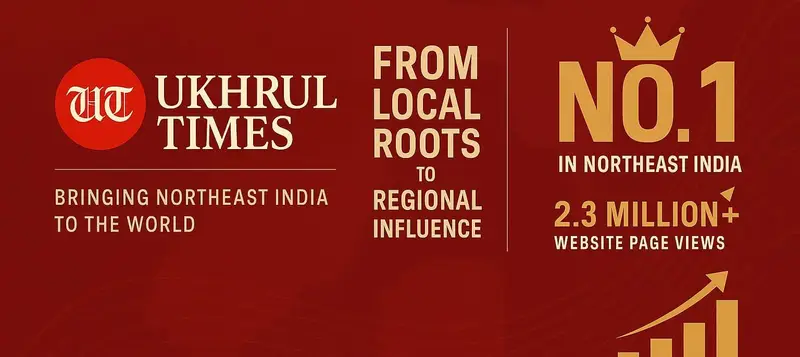Now Reading: ‘Hingminashi Eikhoi’ in the 90s, once an honest call for unity in diversity
-
01
‘Hingminashi Eikhoi’ in the 90s, once an honest call for unity in diversity
‘Hingminashi Eikhoi’ in the 90s, once an honest call for unity in diversity

The Hingminashi Eikhoi production in the 1990s was an earnest attempt to ignite and spread the message of unity in diversity. For those whose memories linger and quivers in the past, the song’s composition resonated with the spirit of Doordarshan’s iconic Mile Sur Mera Tumhara. Like its national counterpart, Hingminashi Eikhoi sought to instill a sense of oneness, unity, and pride in the complex, yet rich diversity of people and cultures of Manipur. It was a call that stirred patriotic emotions for many then and continues to do so today.
However, in today’s Manipur, the gentle voice of Hingminashi Eikhoi, once a sincere call for unity among the many tribes and communities, has been reduced to a mere government tagline. Under the current political dispensation, it is employed to promote hill and valley unity, often in ways that feel hollow and insincere. In a state fractured by polarization and conflict, the word “sincerity” has lost its meaning and significance entirely.
The people of “old Manipur,” (for lack of better word) in their reverence for the wisdom of their predecessors, envisioned the state as a melting pot of peoples, cultures, customs, and cuisines. Their vision, of course with many flaws, carried the enduring message of oneness and unity. Despite the complexity of a state like Manipur, they seemed to understand better that “sincerity” would always triumph over tokenism.
It is not as though there was no conflict among people during those simpler times, far from it. However, in those more innocent days, people perhaps understood better that pitting one’s community against another was detrimental to coexistence. Such divisiveness directly challenged the concept of Hingminashi Eikhoi — the ethos of oneness and unity.
Perhaps they recognised that no other state in the country embodied such profound diversity as Manipur. Perhaps they took pride in the shared sense of belonging that transcended the beautiful valleys and the majestic hills, seeing one another as countrymen, equals, not outsiders. They learned to walk hand in hand, refusing to take solace in the misfortunes of another community.
Today, as politics becomes mired in the struggle for dominance, over geography, ethnicity, religion, and natural resources, we must confront the dark legacy of human history. Wars, conquests, occupations, colonization, and even extermination have left indelible scars. And at the heart of these conflicts, time and again, have been issues of ethnicity and religion.
In 2015, I wrote an editorial for The Imphal Free Press to remind us of this truth. The Meiteis and Meitei Pangals, the Nagas, and the Kuki, Hmar, Zomi —broadly representing the major ethnic groups of Manipur—profess diverse faiths, including Hinduism, Christianity, Islam, and the indigenous Sanamahi religion. This rich tapestry of people and beliefs is both Manipur’s strength and its challenge.
Humans are reflective beings, capable of introspection and growth. In the face of the vicious conflict we find ourselves in today, let us remember that defining every citizen by their ethnicity, tribe, or faith will only disfigure and hinder the creation of an ideally plural, diverse, and harmonious society, which Manipur is!
We must, now, more than ever, reflect on that legacy and strive to rekindle the spirit of Hingminashi Eikhoi — a sincere call for unity, not as a slogan, but as a lived reality.
Editorial | Nehruvian approach to the Nagas and Northeast India




























































G Tombing
Huithu!